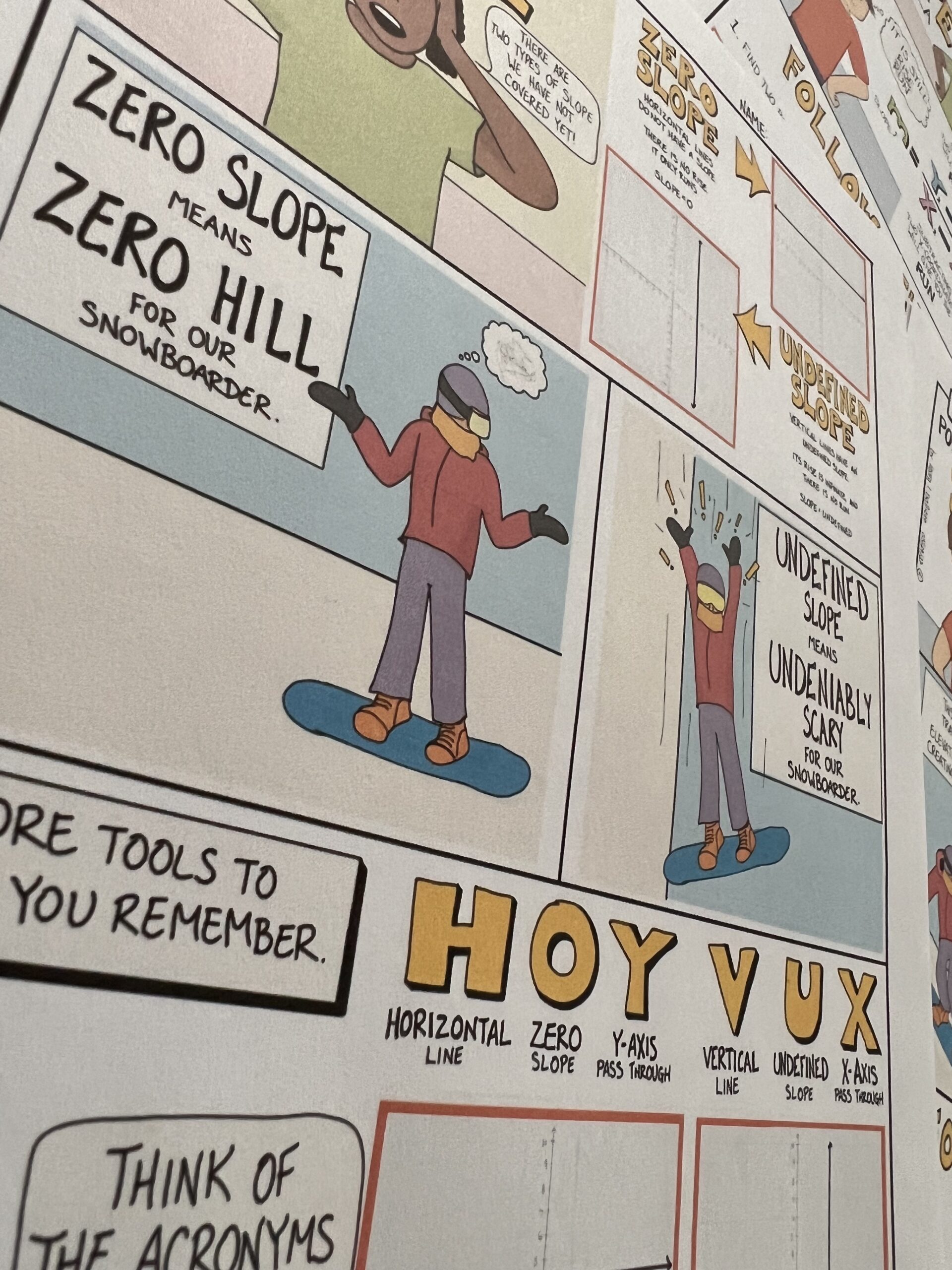Blog
Slope! How to Find a Way to Grab Their Attention

Teaching Slope: How to Find Engaging and Effective Resources.
When it comes to teaching slope, many teachers struggle with how to find unique and impactful teaching resources.
The search for a math lesson plan on slope does not have to be a challenge nor does it have to be time-consuming. There is a low-prep lesson plan, geared toward middle school, ready to get in the hands of your learners.
Teaching slope in math does not have to be just worksheets and lectures.
Math comics are the wave of the future and a guaranteed way to grab the attention of your learners.
By incorporating comics into your math lessons on slope, you can transform a potentially challenging topic into a fun and memorable learning experience. Your students will not only gain a deeper understanding of slope but also develop an appreciation for the creative side of mathematics.

Why Use Comics for Teaching Slope in Math?
Slope can be a tricky concept for some students to grasp. The idea of rise over run and the mathematical equations can feel overwhelming. However, comics offer a unique and effective solution to this problem. Here’s why comics are a fantastic tool for teaching slope in math:

Visual Engagement
Comics are inherently visual. They present mathematical concepts through a combination of images, graphs, and text, making the information more accessible to visual learners.
Geared toward middle school students, this math comic provides illustrations detailing how to find slope. Readers will relate finding slope to locating a room at a hotel.
First, you have to rise up the elevator and then walk (run) down the hall. This visual representation helps make the concept stick.

Simplified Representation
Comics break down complex math problems into smaller, digestible pieces. By using step-by-step visuals, students can more easily grasp the concept of slope.
There is a lot to learn when it comes to learning slope: How to find the rise and the run, how to calculate slope, what is the formula for slope, an more.
A comic has the power to simplify all of these tricky concepts into a digestible and easy-to-grasp format. Pairing concepts with visuals increases retention and makes the information more approachable.

Humor and Engagement
Comics can be funny and relatable. Adding humor to your lessons can lighten the mood and make math more enjoyable, helping students become more engaged in the subject.
Comics often tell a story. By creating a narrative around slope problems, you can engage students in the learning process. They become characters in their own mathematical adventure.
In this comic-style slope lesson plan, readers follow a snowboarder as he travels down different slopes, even undefined slopes).
Learn More About the Slope Lesson Plan
Teaching slope in math does not have to be a struggle.
Looking for More on Slope? How to Find the Right Video
If you are like me, you struggle to find quality videos to show your students. Most of the time, I find videos narrated by a robotic voice or very crumby animations.
This prompted me to start creating my own content. I have been working on transforming my comics into animated shorts with the hope that they will help students better understand the concepts.
My ultimate goal is to help elementary and middle school students better grasp math and science concepts. I know my students were always reluctant to read, and I struggled to engage them in reading science.
Comics work. Visual learning works.
Save 20% on your first order!





